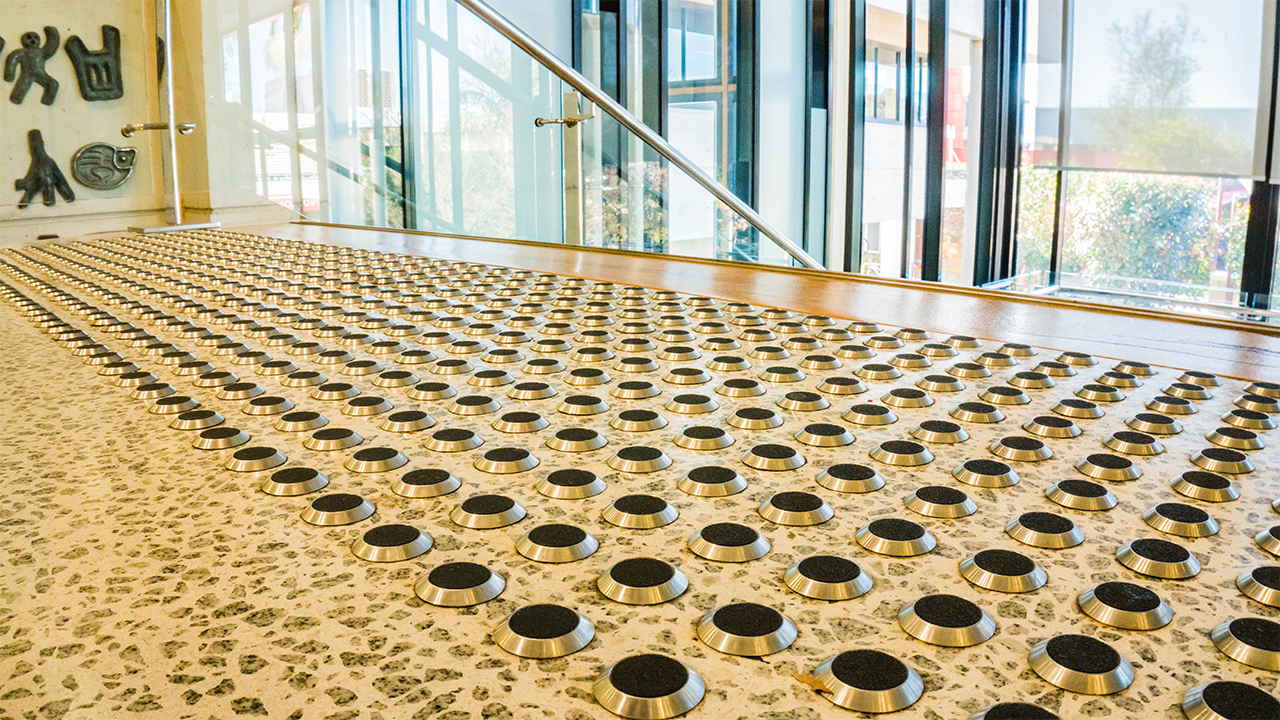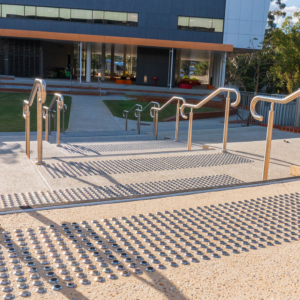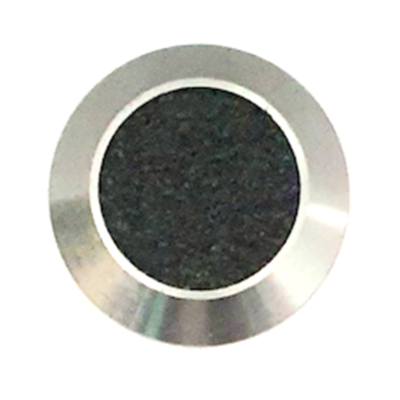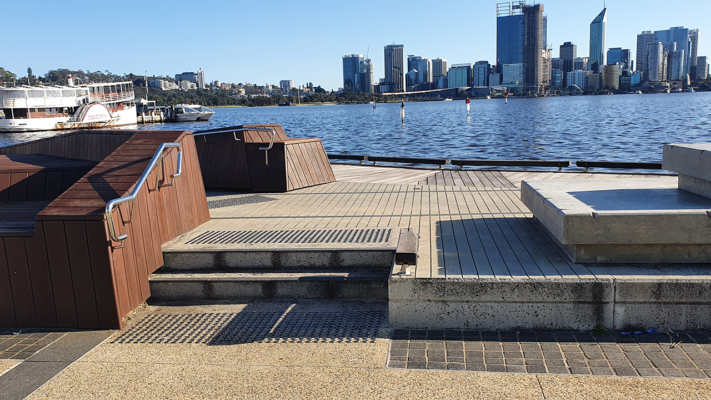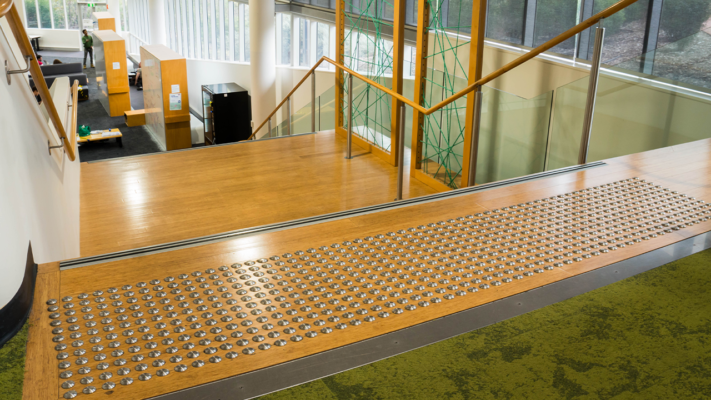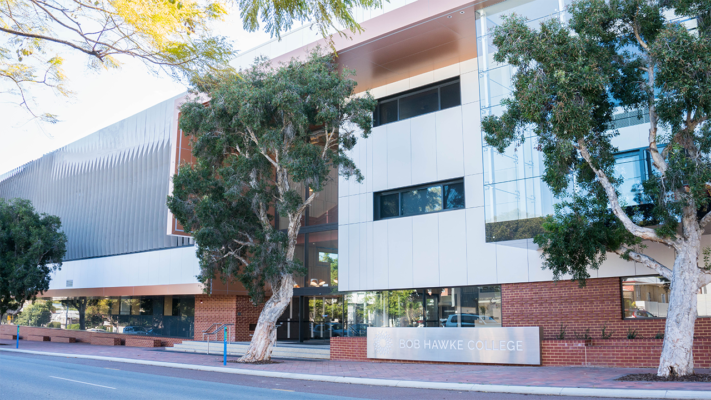Edith Cowan University (ECU) in Western Australia is an institution dedicated to academic excellence and inclusivity. As a hub of education and research, ECU recognizes the importance of creating an accessible and welcoming environment for all students, faculty, and visitors. To achieve this goal, ECU partnered with Dottac, a leading company specializing in tactile solutions. Dottac’s innovative use of stainless steel tactile indicators with carborundum played a pivotal role in transforming ECU into an inclusive and accessible educational institution.
ECU is renowned for its commitment to providing quality education and fostering a diverse and inclusive campus community. Ensuring that individuals with visual impairments have equal access to all areas of the university was a top priority. This prompted ECU to explore solutions that would enhance accessibility without compromising the university’s modern and dynamic atmosphere.
Tactile indicators are essential tools for improving accessibility in educational institutions and public spaces. They provide tactile cues and sensory information to individuals with visual impairments, facilitating safe navigation. The incorporation of tactile indicators with carborundum at ECU was a significant step toward making the university more inclusive and accessible.
Dottac’s involvement in the project began with a thorough assessment of ECU’s premises. This assessment aimed to identify key areas where tactile indicators with carborundum could have the most significant impact. Collaborating closely with university staff and accessibility experts, Dottac ensured that the installation would be tailored to meet the unique requirements of the campus.
One of the primary areas of focus was the entrances to ECU’s buildings. Dottac strategically installed stainless steel tactile indicators with carborundum at the entrances, marking the transition from the exterior to the interior. These tactiles provided clear and tactile cues, making it easier for students, faculty, and visitors with visual impairments to locate and access the main entrances independently.
Inside the university buildings, tactiles with carborundum were placed strategically to guide individuals toward various areas, including classrooms, lecture halls, offices, and common areas. These indicators formed tactile pathways, ensuring that individuals with visual impairments could navigate the campus with confidence. The combination of stainless steel and carborundum offered both durability and slip resistance, enhancing the safety of the tactile indicators.
Staircases, an integral part of multi-story educational buildings, were another area of focus. Dottac addressed this by installing tactile indicators with carborundum on staircases throughout the campus. These tactiles featured raised dots and tactile patterns that clearly defined each step, enhancing safety and accessibility.
Elevators, essential for multi-level university buildings, also received Dottac’s attention. Tactile indicators with carborundum were strategically positioned near elevator doors to aid students, faculty, and visitors in locating and accessing elevators independently. This commitment to accessibility exemplified ECU’s dedication to creating an inclusive learning environment.
The choice of stainless steel tactile indicators with carborundum was not only functional but also practical and long-lasting. Stainless steel is known for its durability and resistance to corrosion, making it an ideal material for both indoor and outdoor use. The addition of carborundum provided slip resistance, further enhancing the safety of the tactile indicators.
The installation of stainless steel tactile indicators with carborundum at ECU underscored Dottac’s commitment to accessibility and inclusivity in educational settings. These tactile indicators symbolized a commitment to making education and knowledge accessible to everyone, regardless of their abilities. ECU’s dedication to accessibility, as demonstrated through its collaboration with Dottac, transformed it into a more inclusive and welcoming educational institution.
Furthermore, the tactiles with carborundum significantly contributed to the safety and confidence of students, faculty, and visitors with visual impairments. By providing clear and tactile cues, they facilitated independent navigation and reduced the risk of accidents, enhancing the overall educational experience at ECU.
